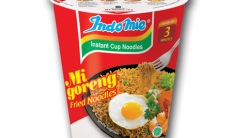Garment firms race to innovateCluster programme finally gets attention
Bangkok Post, Thailand
BUSRIN TREERAPONGPICHIT
”No tears before seeing the coffin” is an old Thai saying that may not be too inappropriate to describe the closure of debt-ridden Thai Silp South East Asia Import Export Co, because it could happen to other manufacturers. The country’s textile and garment manufacturers have been warned for years that they have to move up the value chain and forget about cheap, labour-intensive goods. They’ve also been told that they could not count on a cheap baht forever. But not many listened, and few have taken advantage of numerous programmes offered to help make their industry more competitive.
Since Thai Silp shut down and left more than 5,000 workers jobless, such programmes are expected to receive a more favourable response as many manufacturers are concerned about making their businesses survive.
”I am confident the response of participants in the cluster phase II will be much better than in the first phase,” said Charnchai Sirikasemlert, director of the technology department of the Thailand Textile Institute (THTI) during the second phase’s launch.
The Industry Ministry-supervised THTI has attempted to develop the sunset industry _ garments and textiles _ through a cluster approach that pools small and medium-sized factories in related industries, many of which have limited resources.
The cluster concept seeks to pool resources to offer more flexibility and a greater variety of products at affordable prices. The Phetkasem Road Cluster is a pilot group consisting of the many dye makers and textile and garment manufacturers located on Phetkasem Road.
In phase I, 30 manufacturers participated in the programme with more than 20% turnover. But for phase II launched recently, the number rose to 50. The THTI hopes to set up four other clusters in the South, North, East and West.
Mr Charnchai said the THTI’s purpose was to turn ”defensive marketing”, which waits for a small number of orders from large clients, into pro-active marketing, under which makers generate new ideas to draw clients’ attention.
Innovation is the key, he said. So, for phase II, members would be have access to R&D facilities linking the industry, scientists and other organisations.
The programme would arrange training courses on R&D and marketing strategy for innovative products.
Key technologies for this phase are microencapsulation and nanotechnology, which would play an active role for new function textiles development, as well as technology testing machines.
The THTI also plans to develop the initiative for functional textile makers. Garment factories would specialise in using new textiles for fashionably designed apparel.
”We have to position the Thai industry as the Taiwanese did. They invented lots of new synthetic fibres because it could position them as specialists in that area,” Mr Charnchai said.
The THTI has sought 30 million baht from for a long-term cluster development from the Office of the Permanent Secretary of the Industry Ministry instead of its previous short-term budget of two million baht from the Industrial Promotion Department.
Innovation, such as elastic textiles for T-shirts and Polo-Ts, developed by Covenant Co under its Hydro-Tech brand, is a good example of what the local industry could achieve.
Wisan Wanasaksrisakul, Covenant’s managing director, said his factory had integrated all processes for making T- shirts. These include yarn spinning, weaving, dyeing, sewing and selling its branded products in department stores.
Although only about 50% of its capacity of 30,000 shirts a month is being utilised by 120 staff, he said Covenant was having no problem meeting sales targets of 60 million baht this year _ a 40% increase over last year.





